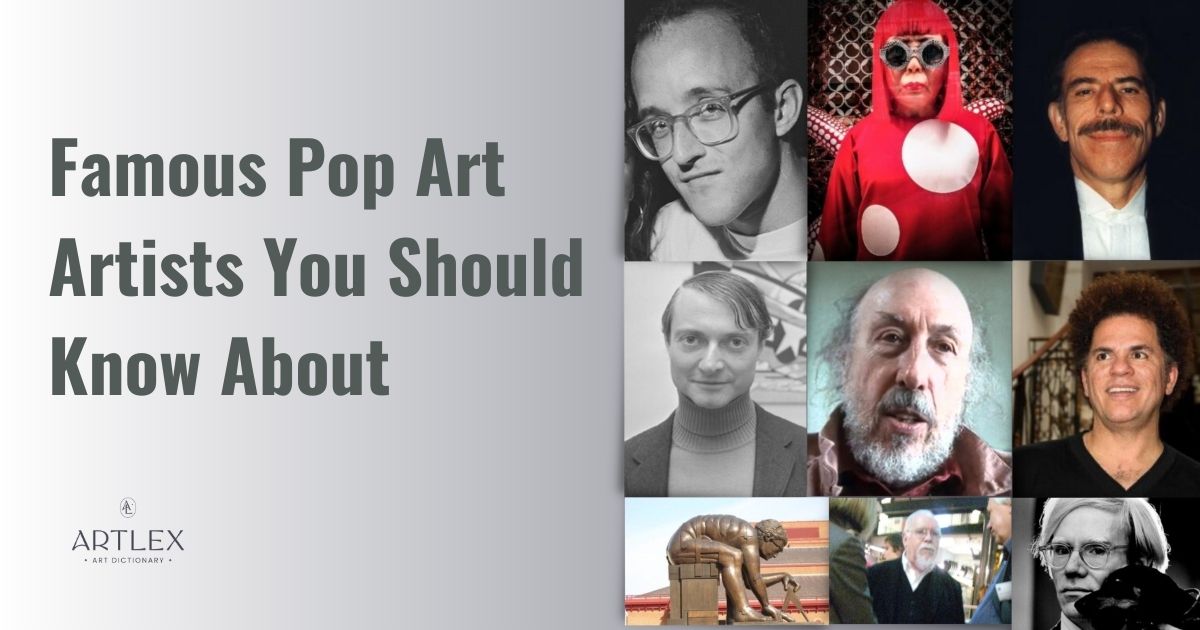
Pop art started in England, in the late 1950s. The first Pop artists included Richard Hamilton, Eduardo Paolozzi, and Peter Blake. Later, the Pop art movement spread to New York, with Pop artists Andy Warhol and Roy Lichtenstein.
Pop art brought together fine art and low culture. It merged the two together seamlessly. Themes popular in youth culture including rock and roll, television, movie stars, and comic books were all part of Pop art. It also paid particular attention to consumerism, after World War II and the advancement of home appliances and popular products.
Richard Hamilton
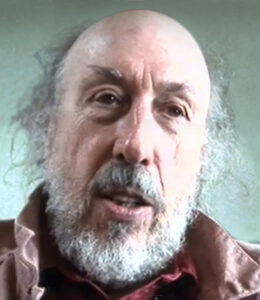
London born, English artist Richard Hamilton (1922-2011) was the founder of Pop art. Hamilton is credited with merging art and consumerism. His visual juxtapositions captured the energy of the time. Some of his most famous works include the collage Just what is it that makes today’s home so different, so appealing? (1956), Interior II (1964) and My Marilyn (Paste Up) (1965).
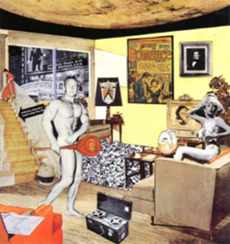
After working as a technical draftsman, he enrolled at the Royal Academy Schools and was expelled. He later enrolled at Slade School of Art, University College, London. After this he began exhibiting, while also teaching art classes. Hamilton represented Great Britain in the Venice Biennale in 1993. Major exhibitions of his Pop art have been shown at the Tate Gallery, London, which also houses an extensive collection of his art, as well as the Solomon R. Guggenheim Museum, in New York.
For more information and artwork, see our Richard Hamilton artist profile.
Eduardo Paolozzi
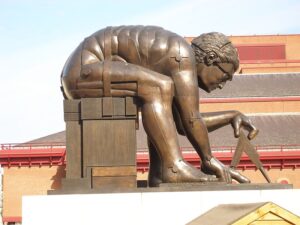
Scottish born Pop artist, Eduardo Paolozzi (1924-2005) studied at Edinburgh College of Art, Saint Martin’s School of Art, and Slade School of Fine Art, in London. He started working as a sculptor in Paris, using the lost-wax method, before moving back to London and setting up a studio. As one of the original pioneers of early Pop art and the British Pop art movement, he was known for his collages, graphic works, sculptures, and mosaic murals,
Paolozzi’s collage I was a Rich Man’s Plaything (1947) was the first piece of Pop art to display the word “pop”. Former Beetle Paul McCartney chose Paolozzi to create a Pop art cover for his album Red Rose Speedway.
For more artwork and information, see our Eduardo Paolozzi artist profile.
Peter Blake
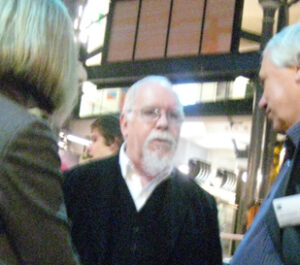
Born in England, Pop art artist Peter Blake (1932-) trained as a graphic artist, which he uses as a base for the Pop art he creates. His much lauded On the Balcony ( 1955-1957) looks like a collage, but the Pop art is a painting that depicts the merge of pop art and fine culture.
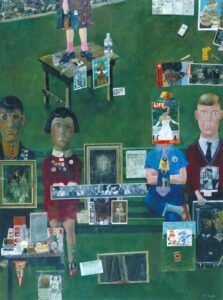
Music has been a big part of Blake’s Pop art. He designed the album cover for the Beatles’ Sgt. Pepper’s Lonely Hearts Club Band (1967), two cover for British rock band The Who, and the Pop art cover for the single Do They Know It’s Christmas? or Band Aid.
For more information and artwork, see our Peter Blake artist profile.
Andy Warhol
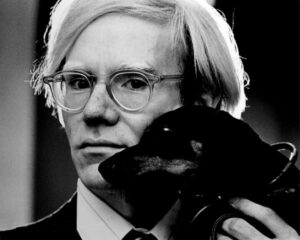
American born, New York based, famous Pop art artist Andy Warhol (1929-1987) was a disruptor in the art world, who had the public questioning what could be considered art. Initially working as an illustrator in commercial art and advertising, he used this as inspiration for his Pop art. Some of the artist’s most famous Pop art works include Marilyn Diptych, and Campbells Soup Cans, both completed in 1962.
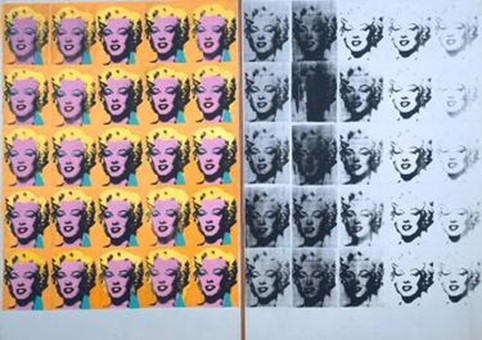
A childhood illness that forced him into bed, led him to sketching to pass the time. Later, he took free art lessons at Carnegie Museum of Art, before attending Carnegie Mellon University, after high school. The silkscreen Pop art Shot Sage Blue Marilyn hit a record price at Christie’s in New York, when it sold for $195 Million in 2022.
For more information and artwork, see our Andy Warhol artist profile.
Roy Lichtenstein
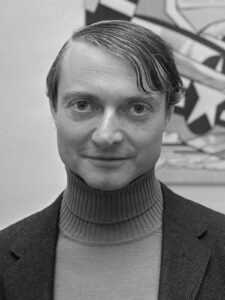
American Pop art painter Roy Lichtenstein (1923-1997) worked in Cubism and Abstract art, which eventually influenced his Pop art, for which he is most famous. The New York based artist used comic books, featuring scenes of romance and war, along with cartoons, as his main inspiration for his Pop art. Ben-Day dots, vivid color and bold black outlines were the result. Dead pan humor appears in the thought bubbles. Three of his most famous are Look Mickey (1961), Drowning Girl (1963), and Whaam! (1963).
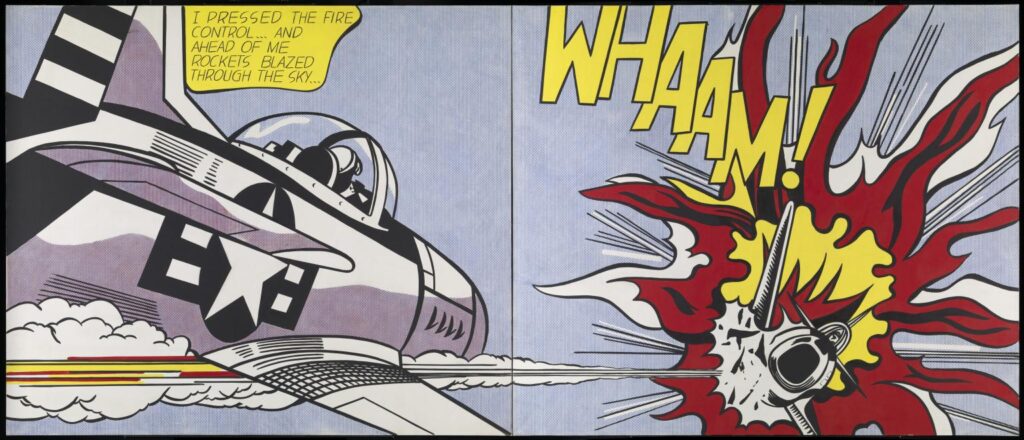
Lichtenstein earned his Master of Fine Arts degree at Ohio State University, where he also taught. He had his first one-artist show a in 1962 at the Leo Castelli Gallery, in New York. In 1964, he became the first American to have an exhibition at Tate Gallery, London. Today, the National Gallery of Art, in Washington has the biggest collection of Roy Lichtenstein’s Pop art.
For more of his artwork and biography, see our Roy Lichtenstein artist profile.
Claes Oldenburg
Famous Pop art artist Claes Oldenburg (1929-2022) was born in Stockholm, Sweden. His family moved to Chicago when he was just seven. Oldenburg studied literature and art history at Yale, and then studied at The School of Art Institute, in Chicago. He moved to New York , in 1956, where he began experimenting with soft sculpture. In 1963, he headed out to Los Angeles.
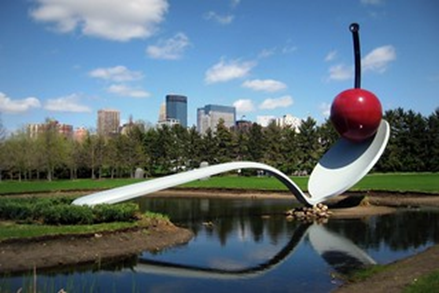
Oldenburg is best known for his large-scale sculptural works, incorporating a sense of fun, including Lipstick Ascending on Caterpillar Tracks (1969), Clothespin Sculpture (1976), and Spoonbridge and Cherry (1988). He is considered a pioneer in Pop art sculpture, with works represented in the United States, Europe, and Asia.
For more of his artwork and biography, see our Claes Oldenberg artist profile.
Keith Haring
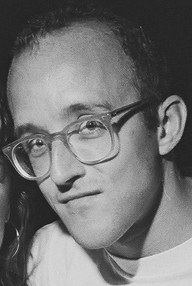
American born artists Keith Haring (1958-1990) was part of the Pop art, street art and Neo-expressionism movements. His father, a cartoonist was the reason for Harding’s early interest in drawing. After high school he enrolled in the Ivy School of Professional Art in Pittsburgh. Formal studies were not for him, and he left. He continued to practice art and held a solo exhibit, in 1978.
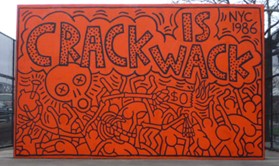
Later Haring became inspired by street art and working in public spaces, starting with white chalk drawings on black. He was later commissioned to make full color murals. Haring’s work often had a political and personal theme. His popularity led to the opening of Pop Shop, in New York, where he sold his works. Some of his famous art include Crack the Whack (1986), Boxers (1988) and Radiant Baby (1990).
David Hockney
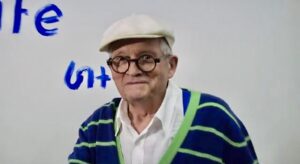
English born David Hockney ( 1932-) was raised in Bradford, England and attended Bradford College, before attending Royal College of Art, in London. His 1964 move to Los Angeles, California was inspirational in his regional Pop art style. Hockney is known for his painting, printmaking, photography, and photo collage that is often biographical in nature. Some of his most famous works include A Bigger Splash (1967), Mr. and Mrs. Clark and Percy (1971) and A Bigger Grand Canyon (1998).
For more information, see our full artist profile on David Hockney.
Yayoi Kusama
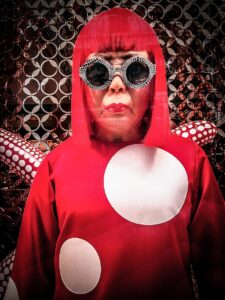
Japanese born Yayoi Kusama (1929-) is known for her Pop art, which incorporates a series of dots, influenced by childhood hallucinations. In many of her works dots cover every surface. After studying for a couple of years at a specialty fine art school, she moved to New York, in 1957. Some of her best-known works include Infinity Nets (1990), Pumpkin (1990) and Dots Obsession (2003).
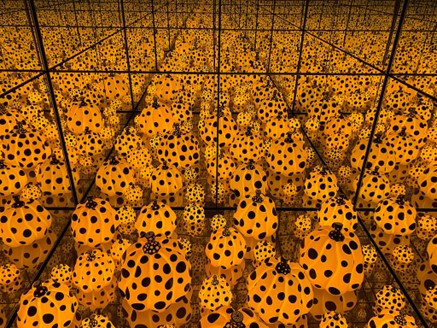
For more information and artwork, see our Yayoi Kusama artist profile.
For other female Pop Art Artists, see our Female Pop Artists Artists guide.
Peter Max
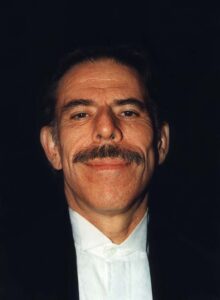
German born, American based Pop artist Peter Max (1937-) credits his living abroad in various countries as the inspiration for his works. He left Germany with his family in 1938, for Shanghai, China for 10 years and Israel for seven. While living in Paris for less than a year, he developed an appreciation for art. The family finally settled in Brooklyn, New York. There Max attended Arts Student League of New York. Later he set up a studio with friend Tom Daly, where they worked on covers for books and advertising, incorporating photography and collage.
Max is known for his loud colors, psychedelic imagery, and posters. His work gained national recognition through campaigns for companies such as 7-UP. He is best known for his Statue of Liberty series, and exploration of American icons.
Romero Britto
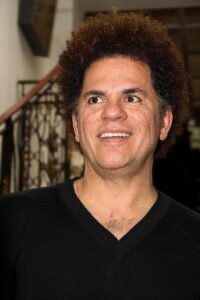
Brazilian born Romero Britto (1963-) and his Pop art have been commissioned by the Super Bowl, the Olympics, the World Cup and even Disney. Travelling to Paris in 1983, he was influenced by Matisse and Picasso. Eventually, he moved to the United States to paint and sculpt borrowing ideas from both cubism and graffiti.
